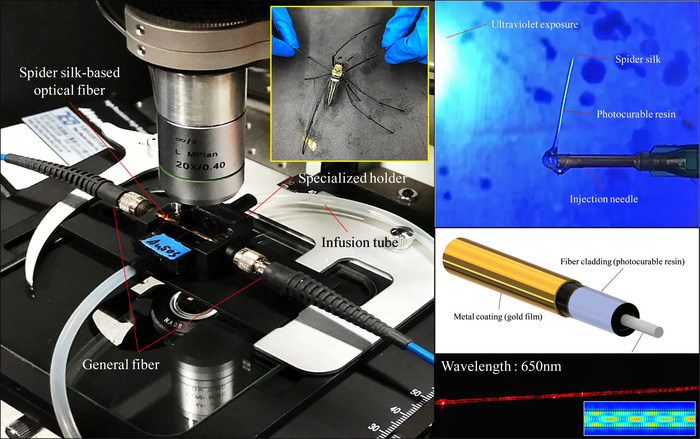To create the sensors, the researchers took fibers of the large spider Nephila Pilipes, just 10 microns in diameter, coated them with a biocompatible photosensitive resin, creating a smooth protective surface. Thus, they obtained an optical fiber with a diameter of 100 microns, in which spider silk performs the functions of the core, and the resin – the shell.
To improve the reading capabilities of the biocompatible sensor, the fiber was coated with a nanolayer of gold.
Glucose sensors are critical for diabetics, but these devices are often not invasive, inconvenient, and inexpensive. Spider silk has attracted attention for its excellent optical-mechanical properties, and we decided to examine the application of this biocompatible material for real-time optical monitoring of the concentration of various sugars.
– said research leader Liu Chenyang of the National Yang Ming University.
If one end of such a “wire” is placed in a liquid sample, and the other is connected to a light source and a spectrometer, the sensor begins to read the refractive index of the solution and, based on this, determines its type. sugar and its concentration.


Web fiber sensor / Photo by Cheng-Yang Liu, National Yang Ming Chiao Tung University
To test the long-term stability of the sensor, the researchers used it to measure solutions containing unknown concentrations of fructose, sucrose, or glucose at room temperature.
Measurements were repeated 10 times at 5-minute intervals and compared with the readings of a commercial refractometer. The sensor demonstrated the ability to detect the type of sugar in a solution and accurately determine its concentration.
The scientists emphasize that the spider silk-based sugar sensor is reusable, economical, easy to use and allows for real-time measurements. Moreover, since it is compact, it allows you to reach hard-to-reach places such as the brain or heart.











![Huge ‘Space Trash’ fell in the middle of the field: more than 3 meters high! [Video] Huge ‘Space Trash’ fell in the middle of the field: more than 3 meters high! [Video]](https://cdn.webtekno.com/media/cache/content_detail_v2/article/126472/bir-tarlaya-saplanmis-halde-uzay-copu-bulundu-yuksekligi-3-metrenin-uzerinde-video-1659510384.jpg)



